Mutable vs Immutable Linux: Which One Should You Choose?
Most Linux beginners waste weeks and sometimes even months on the wrong distribution and end up hating Linux for all the wrong reasons. Though here is the secret: there are actually TWO types of Linux systems, and picking the wrong one means endless frustration. But if you get it right, Linux becomes a joy to use.
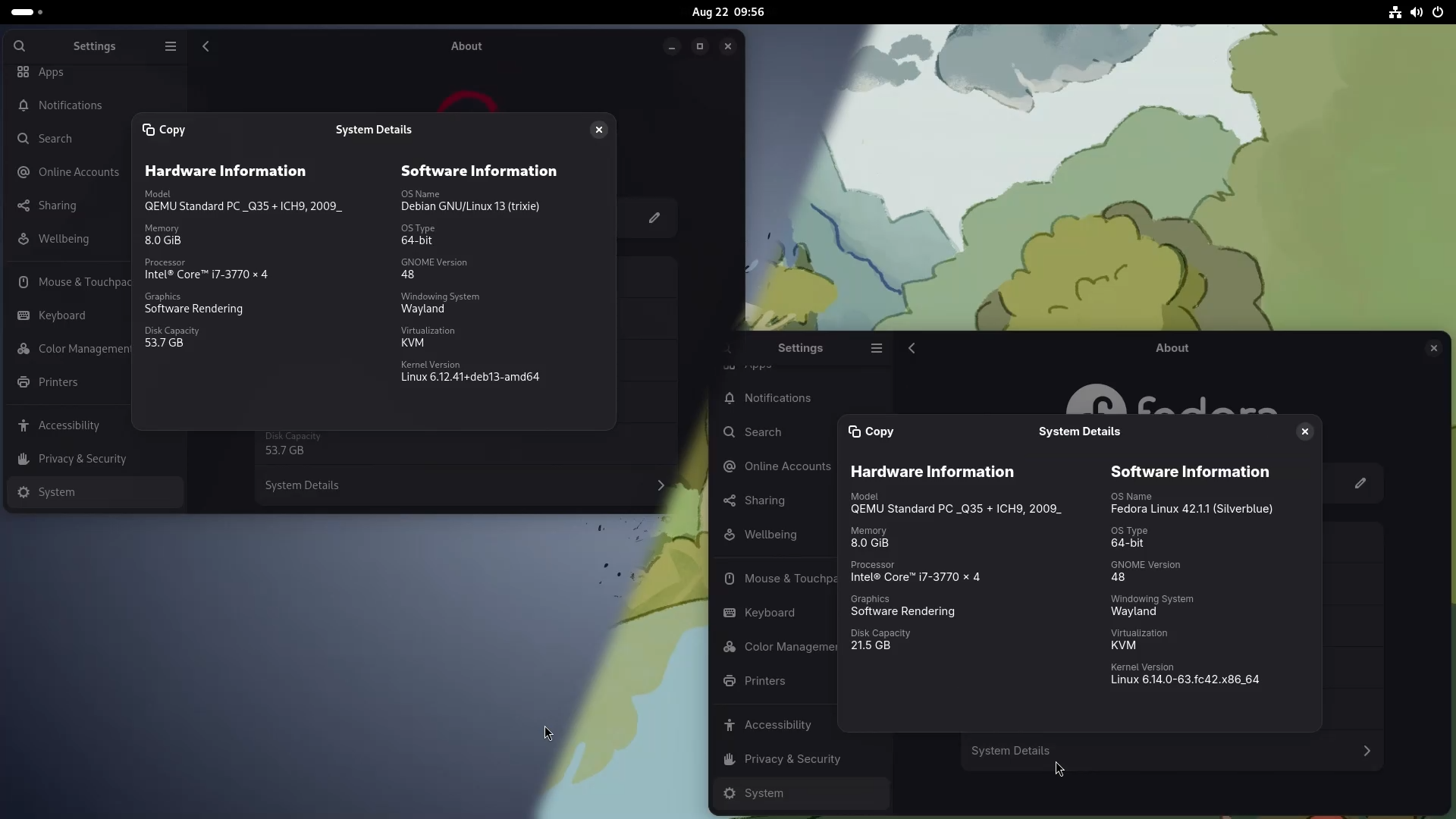
Yes, you heard that right. Because what most of the beginners do is they research online and everywhere they are recommended options like Linux Mint, Manjaro, and so on. But nowadays, apart from the traditional Linux, there exists a second kind called an Immutable Linux distro, and they are rarely considered as beginner-friendly options. So in this guide, I will break down the concept of mutable and immutable Linux in easy layman’s terms so that by the end of this article, you will know exactly which one to choose.
What is Mutable Linux?

If you go by the Dictionary, the word “Mutable” means “capable, susceptible or prone to change or mutation”, and similarly, “Immutable” means “not capable, susceptible or prone to change or mutation”.
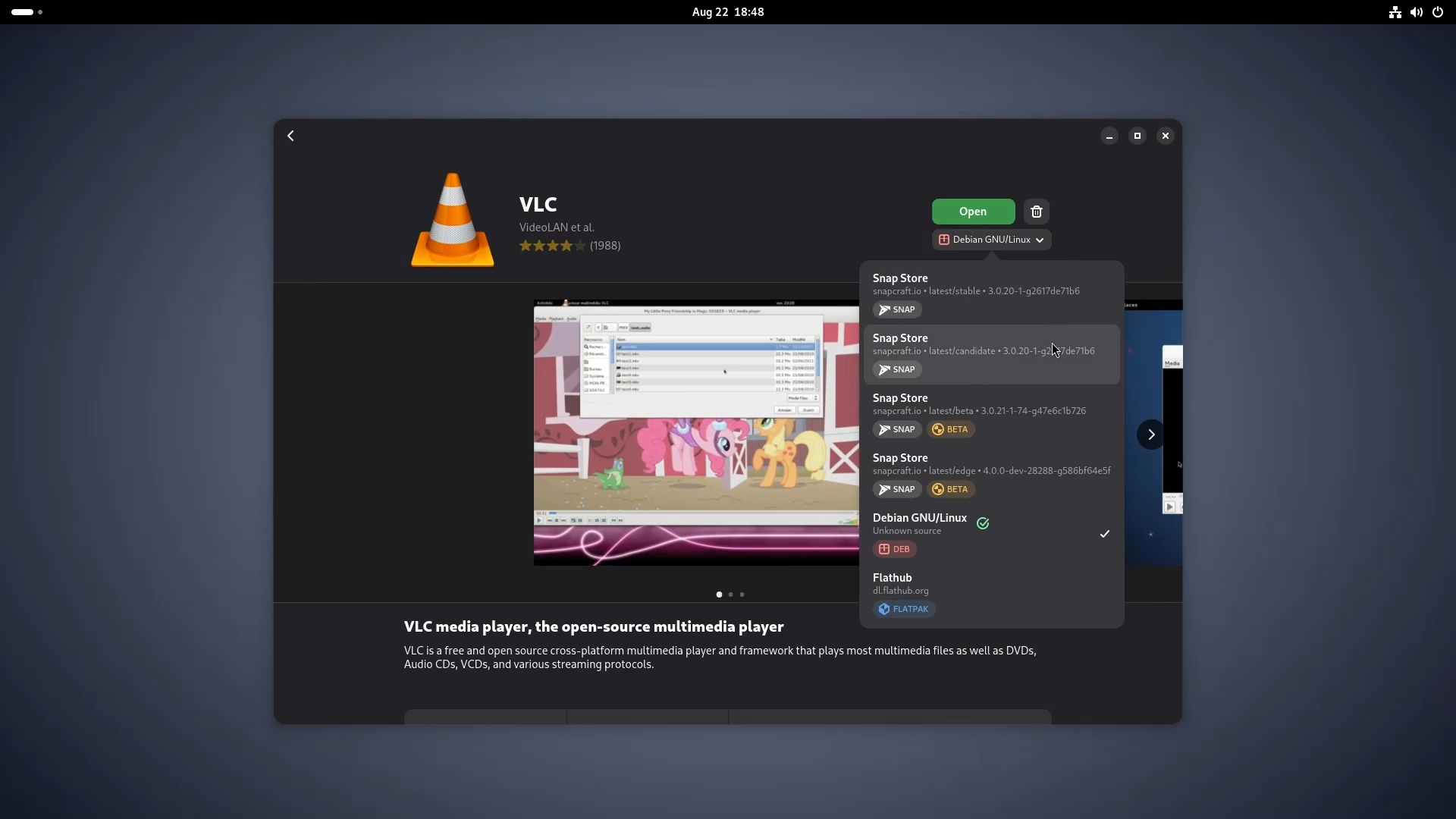
Therefore, almost all the Popular and Classic Linux distros like Ubuntu, Fedora-Workstation, Arch, Linux Mint, Manjaro, etc. are examples of mutable Linux distributions. Meaning their whole system is open for modification. The root file system is writable, meaning users can freely change or modify the system files, install or remove packages through various kinds of package managers, and customise almost everything.
Updates in a mutable system happen package-by-package through system-specific managers like APT, DNF, or Pacman, giving users a huge amount of flexibility.
What is Immutable Linux?

On the other hand, Immutable distros are a newer approach; they are special versions of Linux where the core system is just read-only. Meaning users cannot directly change or modify the root system files, making the Operating System even more secure, stable, and reliable than traditional ones. With the help of Containerisation, Immutable distros isolate every program from the core system and even from each other, so even if you do end up getting a bad, corrupted, or infected application, it cannot touch the underlying system.
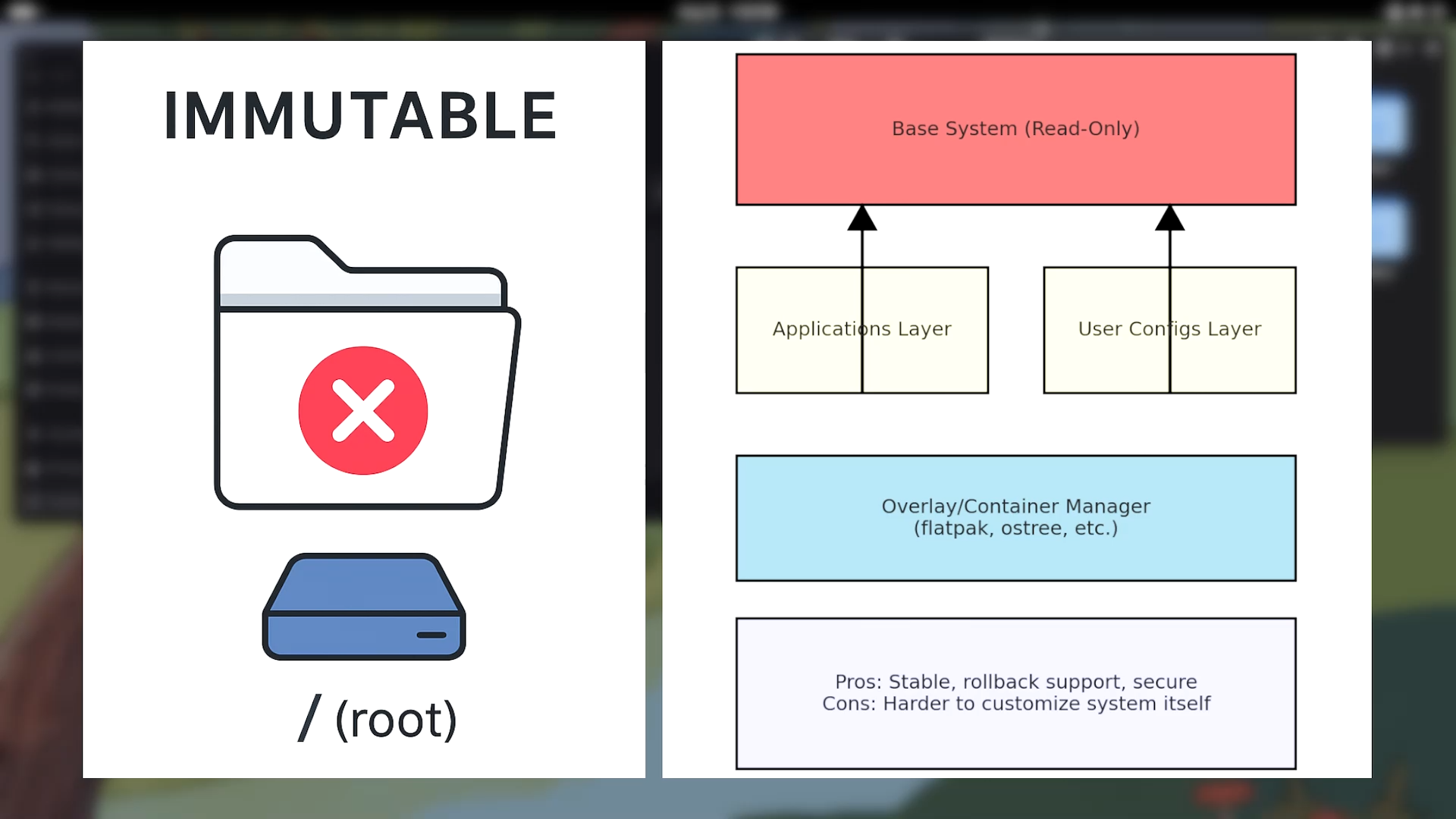
In an Immutable System, Updates are done as atomic upgrades, meaning everything in the system updates at once during the reboot, and if something fails, then the system rolls back to its previous working state. Software installation usually happens in a containerised method through universal package managers like Flatpak, AppImage, or Snap rather than the traditional package managers. Fedora Silverblue, Vanilla OS, NitruxOS, BazziteOS and the newly built GnomeOS are some of the best examples of Immutable distributions.
So Which One Should You Use?
To be honest, after using and testing both types of Linux distributions. I have come to the conclusion that “There is no wrong choice. Just wrong expectations.”
Mutable distros give you endless flexibility. But with great power and flexibility comes great responsibility; you have to maintain your system regularly and properly, otherwise there will be a risk of breakage. Conflicting packages and dependencies can indeed break your system. But in correct hands, they are incomparable.
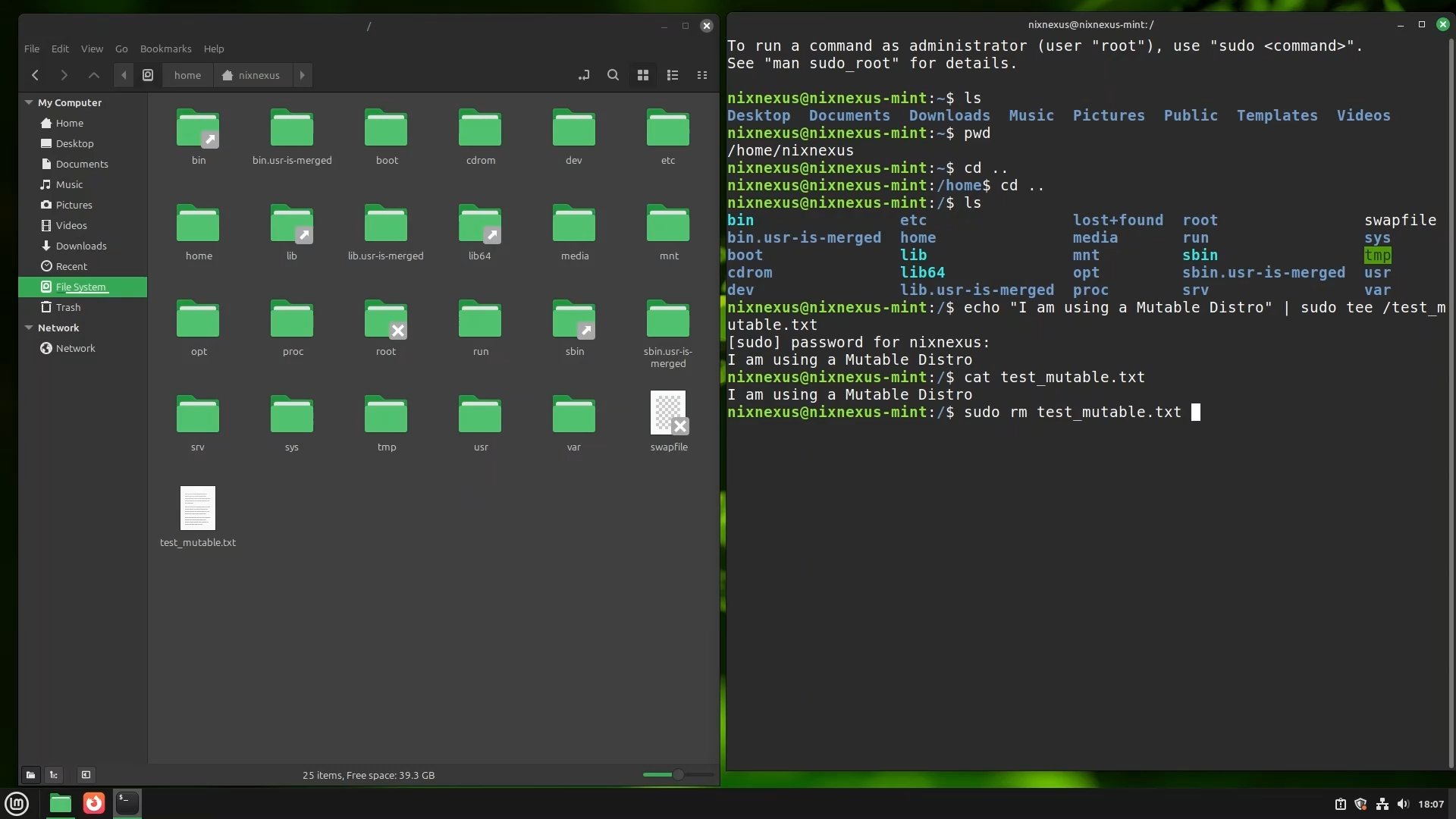
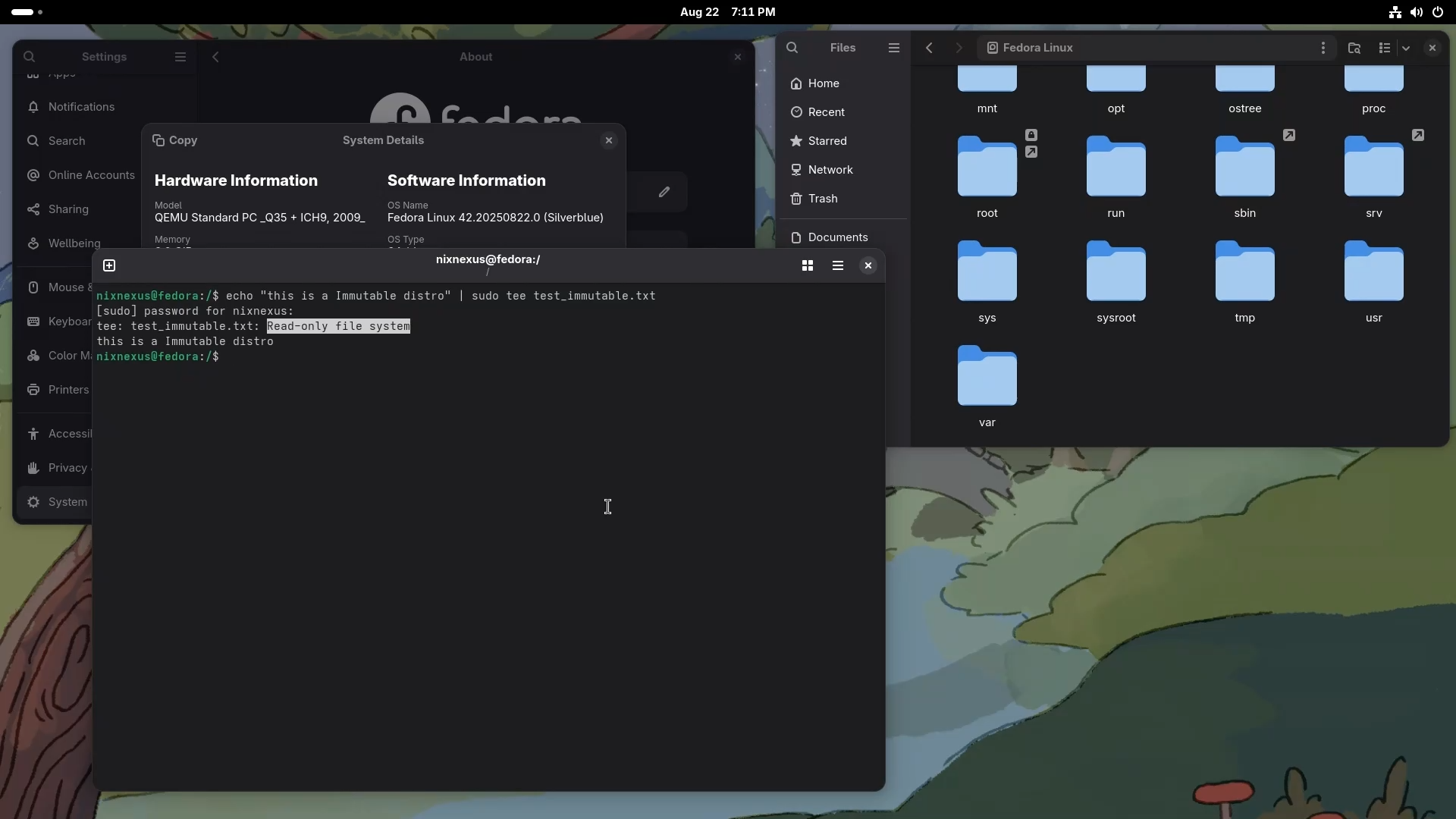
Choose Mutable Distros If:
- You want access to the widest range of software, drivers, themes and tweaks - You do not mind troubleshooting or fixing issues when something breaks - You love experimenting, customising, and editing system files - You need total control over your system dependencies, packages, and system configurations
Choose Immutable Distros If:
- You are a beginner to Linux who wants to play it safe and does not like spending time in Wiki pages or system troubleshooting - You are not into system customisation and modification - You rely on Flatpak, Snap, or AppImage for your software needs - You want a “set it then forget it” Linux distro with maximum stability and fewer chances of breaking
The Future of Linux Distributions
The future is moving towards immutable distros, but mutable distributions will always remain the backbone of the Linux ecosystem. Both types of distributions have their place in the Linux world. The key is understanding your needs, technical comfort level, and how much time you want to invest in system maintenance. Whether you choose the flexibility of mutable distros or the stability of immutable ones, Linux offers something for everyone.
💬 Engage With The Community:
🎬 Prefer watching? Here’s the detailed video:
📑 Related Posts:
🔀 Share this Article:
